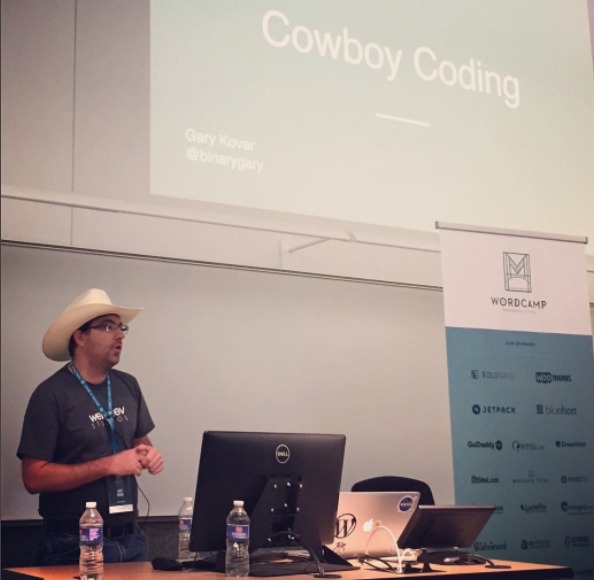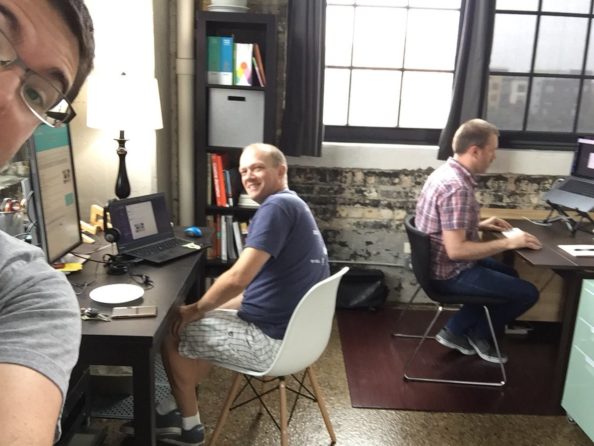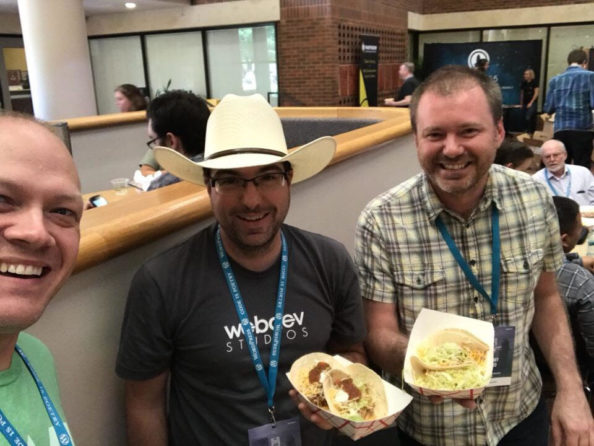If you’ve used Java at all, chances are you’ve already used a method. Look no further than the public static void main(String[] args) at the beginning of every Java program.
How to Install New WordPress Plugins (YouTube Video)
How to Install New WordPress Plugins (YouTube Video)
For anybody just getting started with WordPress, pretty much as soon as you’ve chosen your theme, the next thing to do is to take a look at plugins… in preparation, let’s take a look at how to download/upload, install and activate them… Here’s a quick all-you-need-to-know video – from our new YouTube channel: How to… View Article
The post How to Install New WordPress Plugins (YouTube Video) appeared first on WinningWP.
Go to Source
Author: WinningWP EditorialHow to Install New WordPress Plugins (YouTube Video)
Powered by WPeMatico
22 Essential Tips for Choosing the Best Possible Domain Name for a Website (2017)
22 Essential Tips for Choosing the Best Possible Domain Name for a Website (2017)
Choosing the best possible domain name for your website can be absolutely critical! It’s something that deserves hours (if not days) of thought… and it’s no exaggeration to say that in some circumstances, making the wrong choice can break a business… In short: choosing the ideal domain name is something that every website owner needs… View Article
The post 22 Essential Tips for Choosing the Best Possible Domain Name for a Website (2017) appeared first on WinningWP.
Go to Source
Author: Karol K22 Essential Tips for Choosing the Best Possible Domain Name for a Website (2017)
Powered by WPeMatico
How to Install a New WordPress Theme (YouTube Video)
How to Install a New WordPress Theme (YouTube Video)
If you’re just getting started with WordPress, one of the first things you’ll want to do is get the design right, which usually involves installing a new theme. But how? Well, fear not, because as part of our new new YouTube channel, we’ve put together a handy step-by-step guide. How to install a brand new… View Article
The post How to Install a New WordPress Theme (YouTube Video) appeared first on WinningWP.
Go to Source
Author: WinningWP EditorialHow to Install a New WordPress Theme (YouTube Video)
Powered by WPeMatico
WordPress Hosting Explained: Shared, VPS, Dedicated and Managed WordPress Hosting (YouTube Video)
WordPress Hosting Explained: Shared, VPS, Dedicated and Managed WordPress Hosting (YouTube Video)
As we’ve said previously a bunch of times, when it comes to starting a WordPress website (especially for business), you need to get your hosting RIGHT! The wrong kind of hosting will leave your site unstable, slow and require constant fussing over. When it comes to making money via a business website, you need to… View Article
The post WordPress Hosting Explained: Shared, VPS, Dedicated and Managed WordPress Hosting (YouTube Video) appeared first on WinningWP.
Go to Source
Author: WinningWP EditorialWordPress Hosting Explained: Shared, VPS, Dedicated and Managed WordPress Hosting (YouTube Video)
Powered by WPeMatico
Post Event Report: WordCamp Minneapolis/St. Paul
Post Event Report: WordCamp Minneapolis/St. Paul
They ate donuts, drank beer, and played board games. But it wasn’t just about having fun at WordCamp Minneapolis/St. Paul. There was also education, information, assistance, and plenty of networking.
WebDevStudios (WDS) Senior Backend Developer, Justin Foell, and Backend Developers, Jeremy Ward and Gary Kovar, all attended the event, each playing an active role. Justin acted as a volunteer, while Jeremy assisted the WordCamp as a volunteer organizer, including working the Happiness Bar for two hours. Gary presented a seminar, “Cowboy Coding – Best Practices,” which went really well.

But educating others wasn’t Gary’s only favorite moment. “I really enjoyed the hallway track with a bunch of friendly folks in Minneapolis/St. Paul,” he says. Another big highlight was when the three developers co-worked together at Jeremy’s home. Because we work remote at WDS, it’s always an enjoyable moment when teammates can spend time bonding in-person and working together.

Of course, no WordCamp would be complete without tacos.

WordCamps are a pretty big deal to us. We attend and speak at many. Find out which ones we’ll be at next by visiting the WDS Gives Back page.
The post Post Event Report: WordCamp Minneapolis/St. Paul appeared first on WebDevStudios.
Go to Source
Author: Laura CoronadoPost Event Report: WordCamp Minneapolis/St. Paul
Powered by WPeMatico
What Is WordPress Multisite and How Can It Help You? (Part 1)
What Is WordPress Multisite and How Can It Help You? (Part 1)
Editor’s Note: The following is Part 1 in a three-part series titled, “What Is WordPress Multisite and How Can It Help You?”
Introduction to WordPress Multisite
There is a good deal of information on the web about WordPress Multisite, but most of it dives too deep technically, or quickly shows you steps to set up a Multisite environment. I am going to tackle it from another angle, from the point of view of an outsider looking in (with possibly no technical background) wondering if WordPress Multisite will fit the needs of their organization. To help facilitate the discussion, let’s start with some terminology.
New Terminology
WordPress Multisite introduces new ideas into WordPress, and there are several new terms that come along with it. Below are the various Multisite terminologies defined to help provide a foundation in communication for the rest of the article.
- Network: The Network refers to a group of sites created on your Multisite instance. Though it is technically possible to run multiple networks on a single Multisite instance, we will focus on the basic single network that comes with Multisite. To keep things simple, you should be aware that some older literature referred to a Network as a Site.
- Site: A site refers to a single site within a network. These are sometimes also referred to as subsites, or blogs. Over the years, the term site has changed meaning to refer to the individual sites on a network. You may see reference in older literature that use the term site in the context of network.
- Blog: Another name for a single site on the network.
- Subsite: Another name for a single site on the network.
- Network Admin: This is a new section of the wp-admin area that appears in the Admin Bar after enabling Multisite on your WordPress installation. The Network Admin is where you will control the sites, plugins, and themes available to your sites.
- Super Admin: Super Admin is a new role that is available specifically for Multisites. Users with Super Admin access are allowed to access the Network Admin area and manage the entire network. Super Admins can access the dashboards of any site and administer them as well. The traditional Administrator account only has access to the sites it has permissions on.
- Subdomain Install: Network setup option that creates new sites with a subdomain of the primary domain. For example:
- Primary domain: example.com
- Site for Bob: bob.example.com
- Site for Sally: sally.example.com
- Subdirectory Install: Network setup option that creates new sites with a subdomain of the primary site. Useful when creating sites that all need the same look and feel such as corporate or language sites. For example:
- Primary domain: example.com
- Site for Bob: example.com/bob
- Site for Sally: example.com/sally
What is WordPress Multisite?
You are undoubtedly familiar with WordPress. A content management system you install to manage your website content. Perhaps you have multiple websites, each with their own installation of WordPress running the site. Enter WordPress Multisite; WordPress Multisite transforms a single site into a powerhouse that can run an unlimited number (nobody has found a max number yet!) of websites from a single WordPress installation. In essence, it could combine all the individual WordPress installations you run into one single installation that supports all the sites. Each site can have its own domain, theme, and set of plugins utilized.
As an example of how I use the power of WordPress Multisite, I have several family members who have basic blogs set up to post their random thoughts. There are also several organizations that I have helped support over the years and test beds for new corporate sites running. Each of the site owners are able to manage their own content, while I ensure the network stays up and running efficiently with WordPress, and that all plugins are kept up to date.
Feel free to take a peek at a couple sites on my network:
- http://raeann.lobaugh.us/ – Sister’s site
- http://cara.lobaugh.us/ – Aunt’s site
- http://lewiscountychaplaincy.org/ – Website for the Lewis County Chaplaincy agency
- http://lobaughwedding.com – Site for Lobaugh weddings, currently featuring my wedding
- http://fetchfitness.clients.lobaugh.us/ – In-progress site for a friend’s business
You will notice there are subdomains and custom domains. WordPress handles both with elegance. By default, new sites on my network are created as subdomains of lobaugh.us and then a custom domain is applied when ready. Subdirectories are also supported. Subdirectories make it look like all the sites are part of the same domain. For example, in my network, my sister’s site could be http://lobaugh.us/raeann. There are good reasons to run WordPress Multisite in subdomain mode that I will get into in Part 3.
In Part 1, you were introduced to new terminology used by WordPress Multisite and provided a high level view of what WordPress Multisite is. In the following parts, we will cover why using WordPress Multisite matters, and how to determine if it could be the right tool for your organization.
The post What Is WordPress Multisite and How Can It Help You? (Part 1) appeared first on WebDevStudios.
Go to Source
Author: Ben LobaughWhat Is WordPress Multisite and How Can It Help You? (Part 1)
Powered by WPeMatico
Meet BRAD
Meet BRAD
WebDevStudios (WDS) would like to proudly introduce you to BRAD. No, not Brad Williams, our CEO. We mean the WordPress plugin you didn’t even know you needed till now: Better Responsibility Around Discoverability, aka BRAD.
Developers Aaron Jorbin and Andrew Norcross created the BRAD plugin after our own Brad tweeted this:
I REALLY wish this was easier to spot on WordPress installs. So many sites are launching with privacy enabled https://t.co/X12J8tdYVy
— Brad Williams (@williamsba) July 13, 2017
Boom. Aaron and Andrew combined their talents and BRAD was born—their effort to prevent WordPress websites from accidentally excluding themselves from search engines. Learn more about how and why Aaron and Andrew developed the plugin at The Daily Jorbin.
When Brad innocently tweeted his dismay with sites launching with privacy enabled, he certainly didn’t expect to inspire the creation of a plugin, much less have one named after him.
“It’s funny because years ago Scott Basgaard and I worked on a patch for WordPress Core to make the Privacy Enabled option more obvious,” explains Brad. “It was eventually accepted into Core and looked great, but somewhere over the years, and many many releases since then, the notice was made less obvious again.” Sounds like BRAD is the solution to that.
Overall, Brad loves BRAD.
“Aaron and Andrew are both great guys, and amazing developers, so it was awesome to see them go from idea to release in less than 24 hours. You really do have to love the WordPress Community.”
But don’t get the wrong idea. It’s not as though having a WordPress plugin named after him has gone to Brad’s head. Okay. That’s a lie. Brad thinks he’s immortal now.
“I think I’m reaching Highlander status,” he declares. At the very least, Brad is grateful, and he plans to repay Aaron and Andrew through gifts of whisky and coffee.
“They know who gets what,” he says. Are you launching a new site and want to ensure that it’s not excluded from search engines? Download and install BRAD today. Use the link below.
Follow Aaron and Andrew on Twitter: @aaronjorbin and @norcross. Aside from installing BRAD, use the checklist below (created by WDS Lead Frontend Developer, Greg Rickaby) next time you launch a new website.
- Turn off the “Block Robots” setting under Settings –> Reading
- Check robots.txt to ensure it’s also not blocking robots
- Manage redirects (old pages to new pages, and www -> non-www)
- Make sure the SSL certificate is set up for both WWW and non-WWW
- Make sure any Webhooks are set up (WooCommerce, Stripe, Gravity Forms, etc…) and pointing at the new URL
- Optimize images
- Check accessibility
- Total Validator
- WAVE extension
- Screen Reader testing
- Set your favicon
- Run the site against: https://www.webpagetest.org/
- Run the WordPress SEO (Yoast) Configuration wizard and input social media links, logos, and turn on Sitemap
- Set up Google Analytics
- Ensure that Website Feature Documentation is up-to-date
- Create a screenshot for your theme
- Set up your RSS Feed
The post Meet BRAD appeared first on WebDevStudios.
Go to Source
Author: Laura CoronadoMeet BRAD
Powered by WPeMatico
Preparing for Gutenberg
Preparing for Gutenberg
Your WordPress editor is about to get a makeover! While the details aren’t complete yet, we know that soon, the way we edit our content in WordPress is going to change. It’s called the Gutenberg Editor, and the time has come for you to prepare for it.
Typically when you log into your website, you go to a Post, Page, or other “thing” to add or edit text, images, and more. Central to your website experience is a the big blank Text Editor. Most of the stuff you want to show your users goes into this Text Editor. If your site has a bit more customization, you’ll have extra meta boxes to add extra bits of information and content. Whether it’s for SEO or linking to related resources, these meta boxes aren’t always displayed in the editor where they show up in your content. Heck, sometimes they don’t even show up in your content at all.
When you think about, it’s not the most intuitive way to deal with your content. How did we end up here? Years ago, the WordPress admin interface was revolutionary, if you wanted to publish and still own your content. Instead of having to learn HTML, you could simply enter a username/password, write, and show the world—totally friction-less. Just type, publish, and it went live.
As website complexity has grown and site owners have figured out how visitors use websites, our understanding of content has expanded well beyond just a wall of text and a picture. Content, these days, can be relationships to other posts and products, supporting images, sales pipelines, tutorials, forms, and a billion other things. Essentially, web publishing has outgrown the humble Text Editor view. WordPress agencies and plugin developers have been dealing with this by bolting on meta boxes as needed.
WordPress core developers see this Frankenstein approach as problematic. The solution is Gutenberg. Named after Johannes Gutenberg, who invented a printing press with movable type more than 500 years ago, the Gutenberg Editor is very much beta software. Each point (0.0.x) release of Gutenberg has significant changes and improvements over the previous, so it’s difficult at this point to see where it will end up. Because the developers are seeking active feedback, each update polishes the user experience a bit more. However, we’re still months from Gutenberg being part of WordPress core. So, expect many more changes before all the dust settles.
Gutenberg is an attempt to make the editing experience feel a bit more logical. This is accomplished by treating everything as a block. Ideally, this will make the task of creating content much more intuitive (and heck maybe even fun?). One of the biggest changes that hasn’t been accounted for in Gutenberg is what to do with all of the “legacy meta boxes.” In some cases, they’ll make sense as a block that is added to the content. But some meta isn’t necessarily something you’ll need to display. That kind of content doesn’t fit in the Gutenberg block model.
We expect Gutenberg will ship in WordPress 5.0. That’ll probably be in the second quarter of 2018. In the meantime, it will be important to stay on top of both WordPress core and plugin updates as some of the groundwork for dealing with Gutenberg will be laid before it’s available in the backend. Start thinking about the metadata you use in your posts. Unlike when Facebook changes the interface, WordPress is giving us a huge amount of notice. If you need help in either of these areas, reach out to experts at Maintainn. They’re actively preparing for Gutenberg and are fluent in all things WordPress.
Photo by Bruno Martins on Unsplash
The post Preparing for Gutenberg appeared first on WebDevStudios.
Go to Source
Author: Gary KovarPreparing for Gutenberg
Powered by WPeMatico


